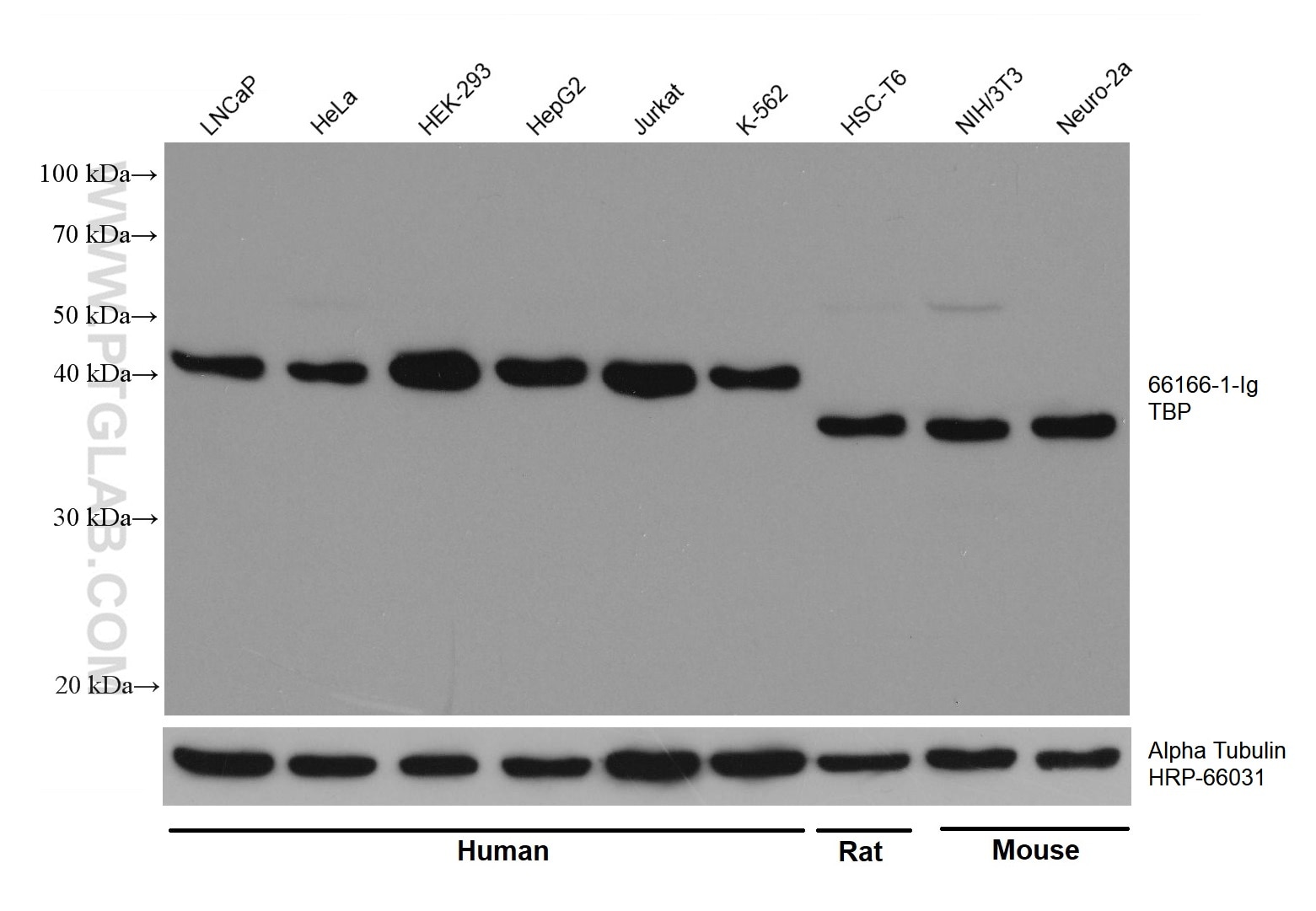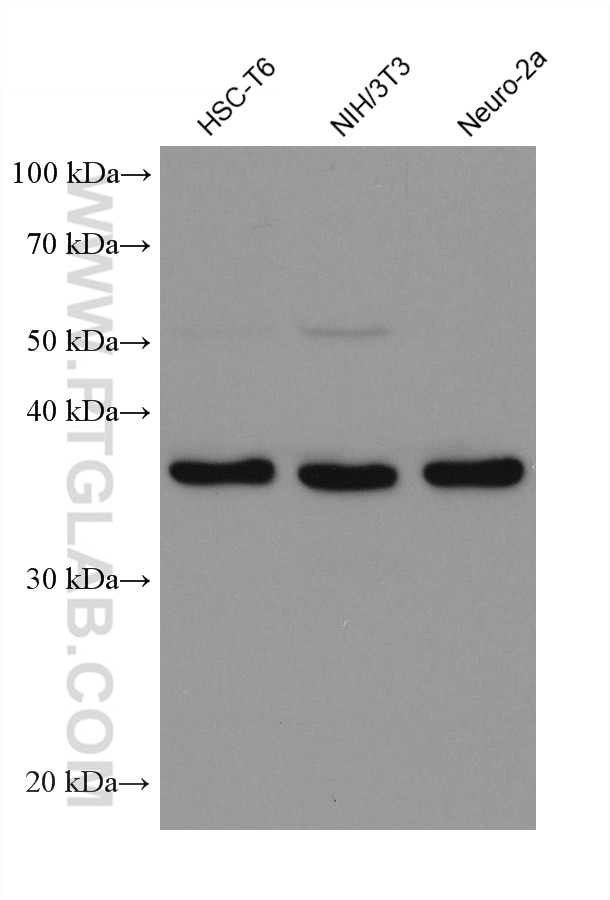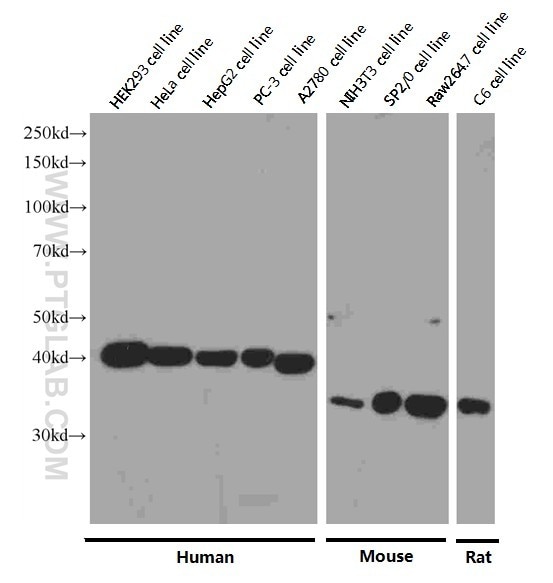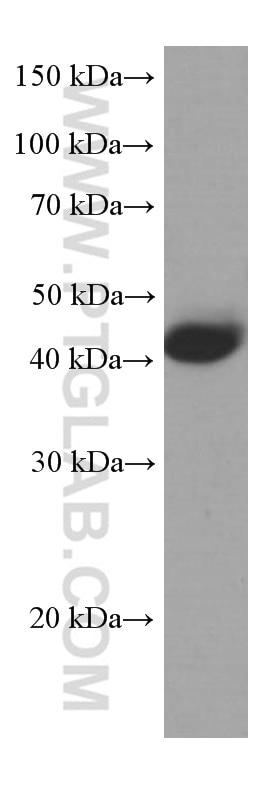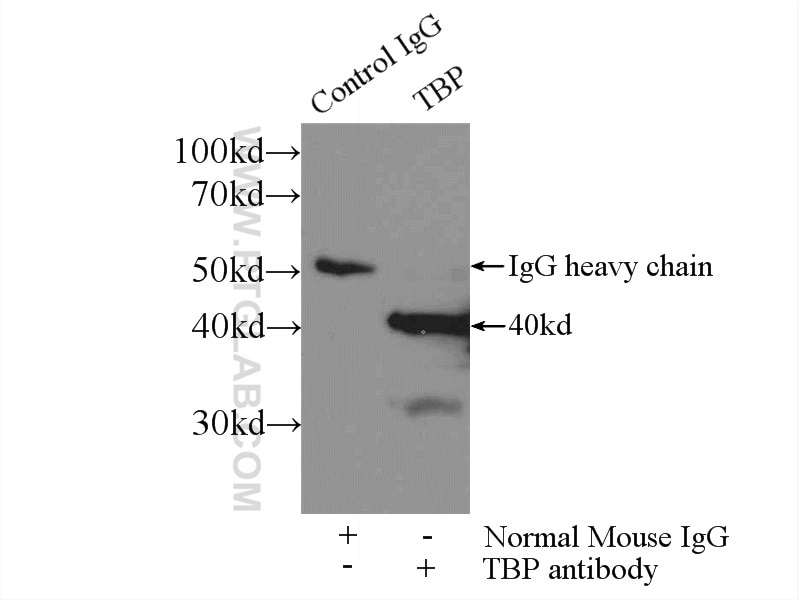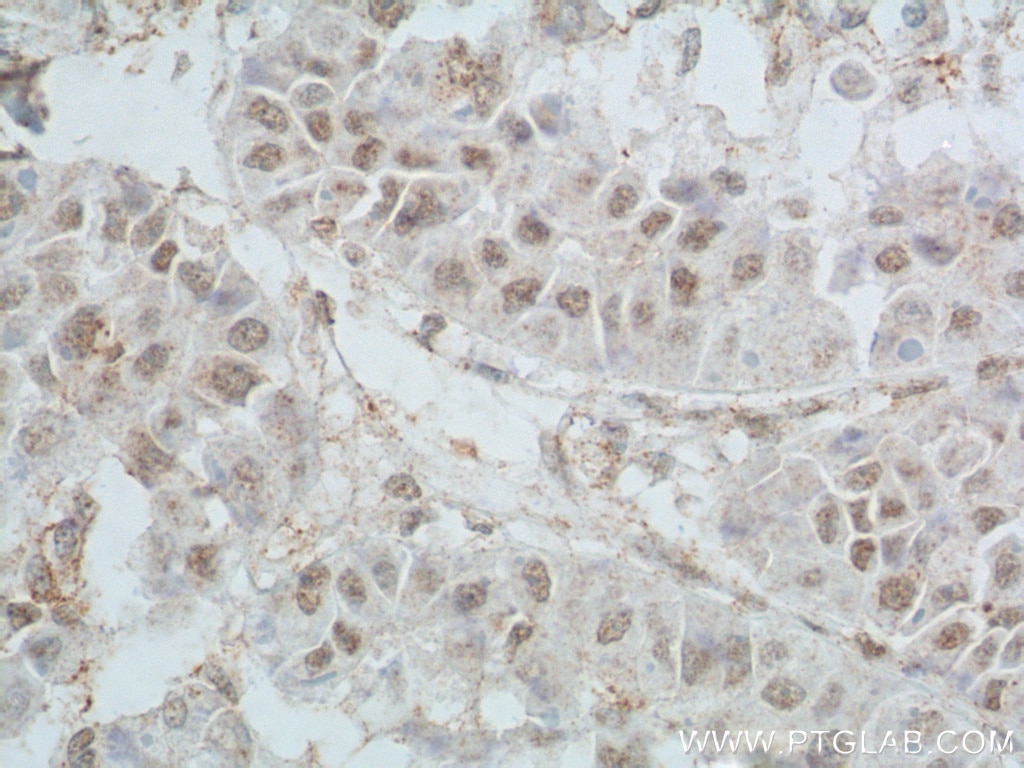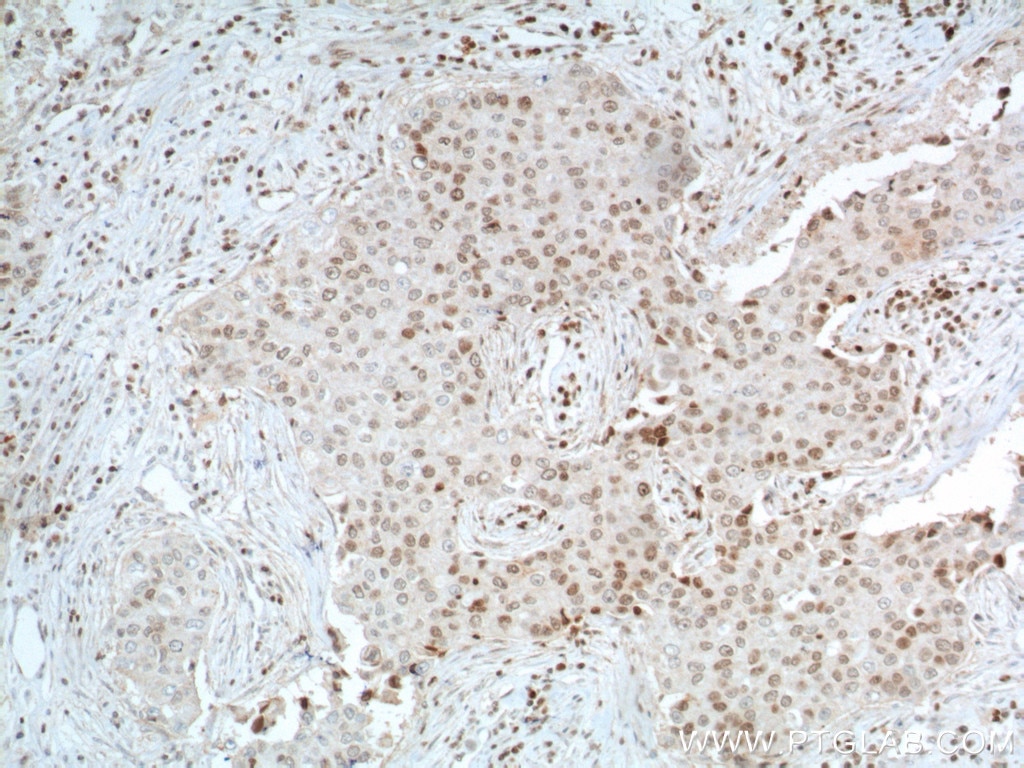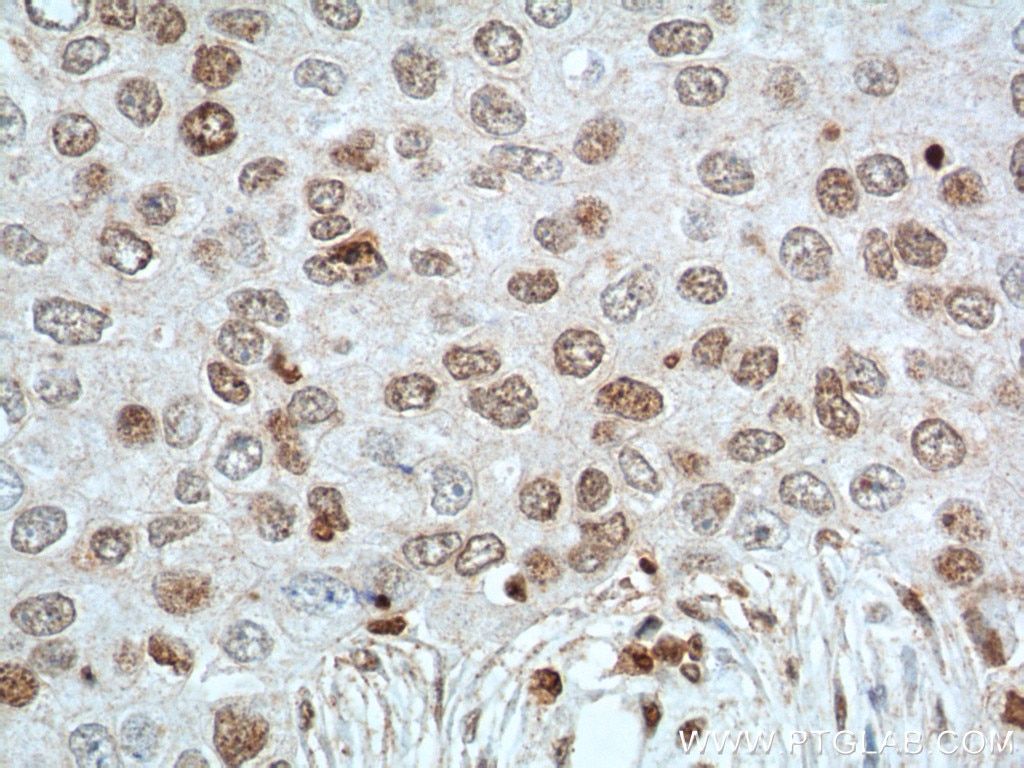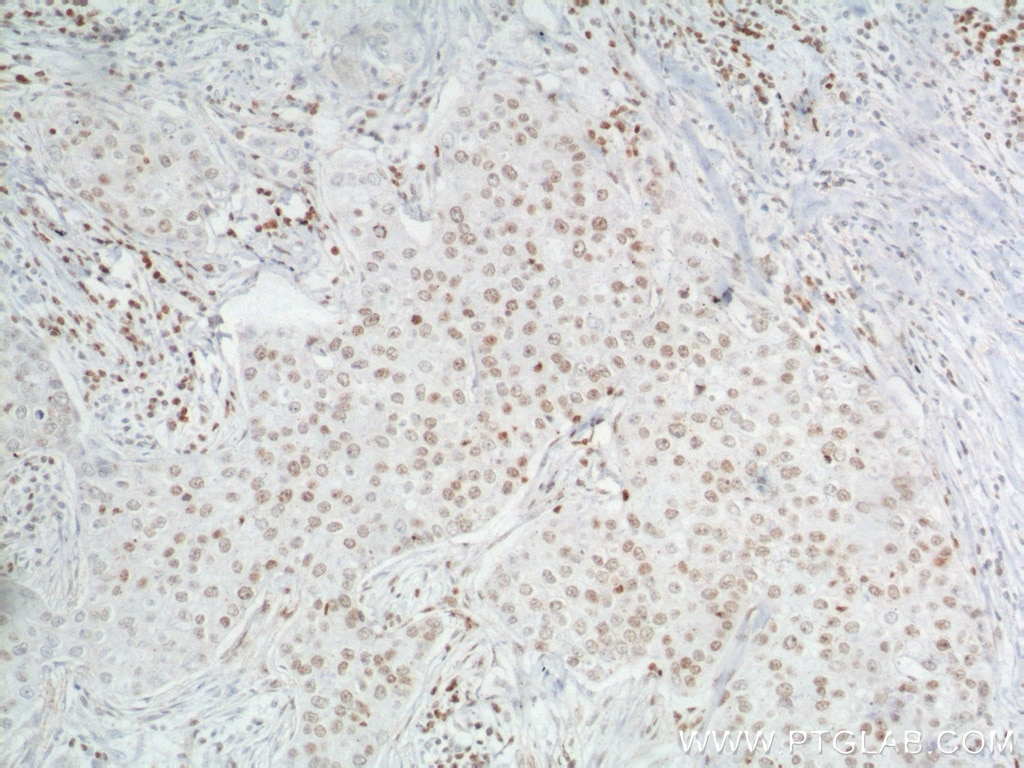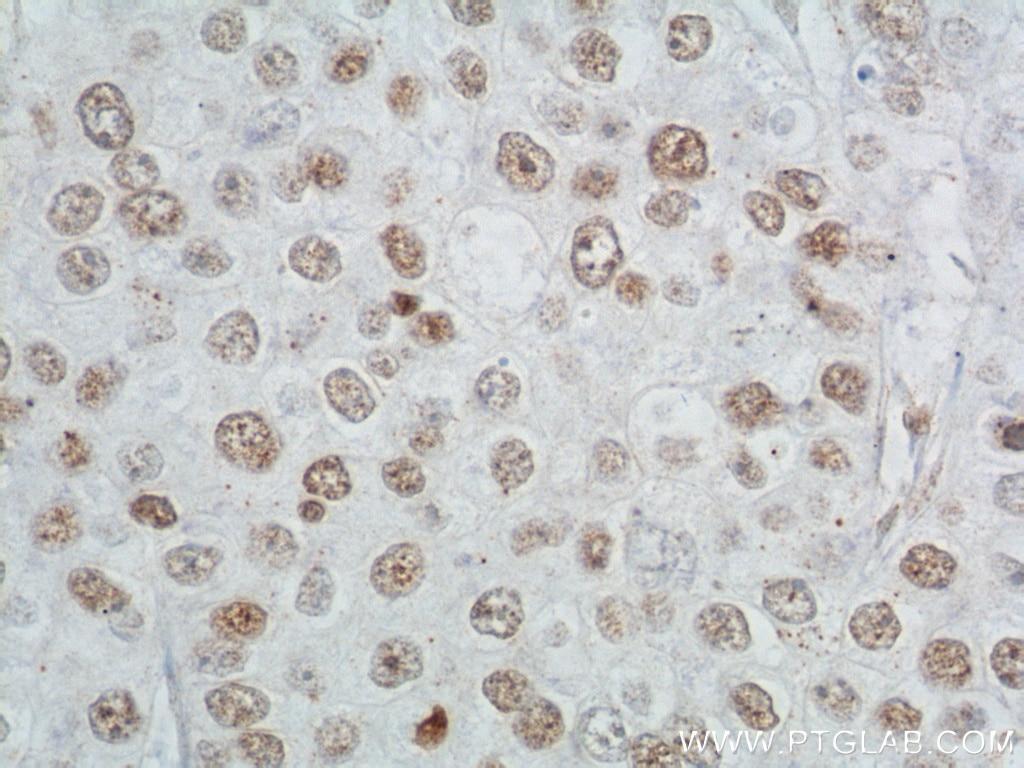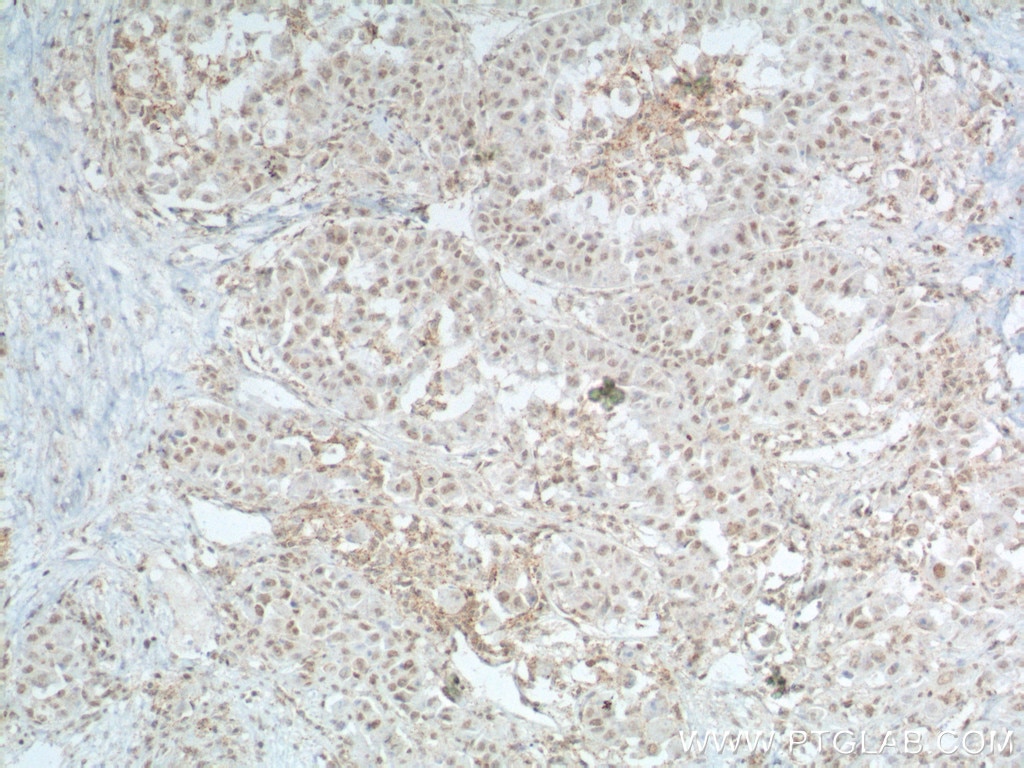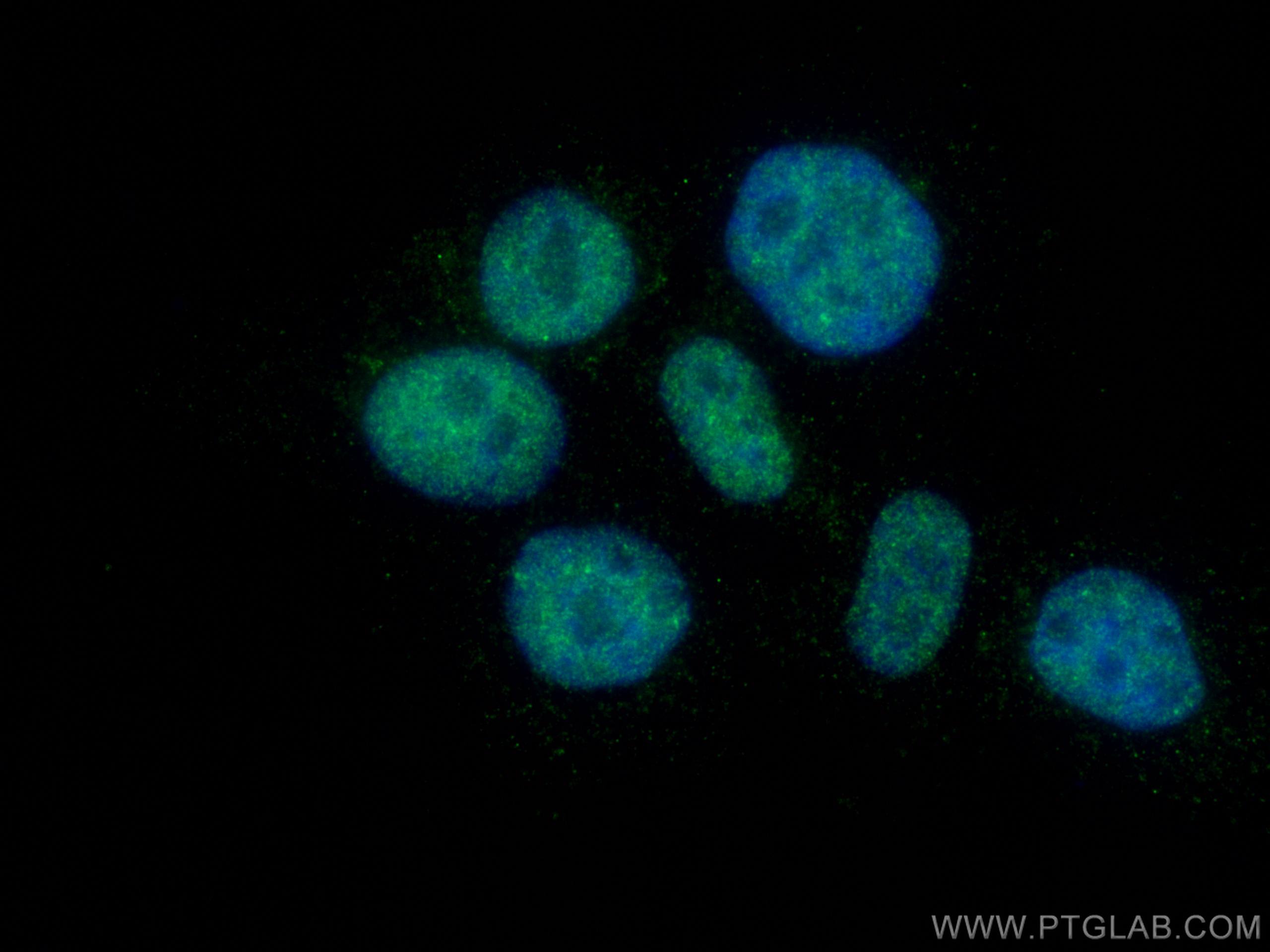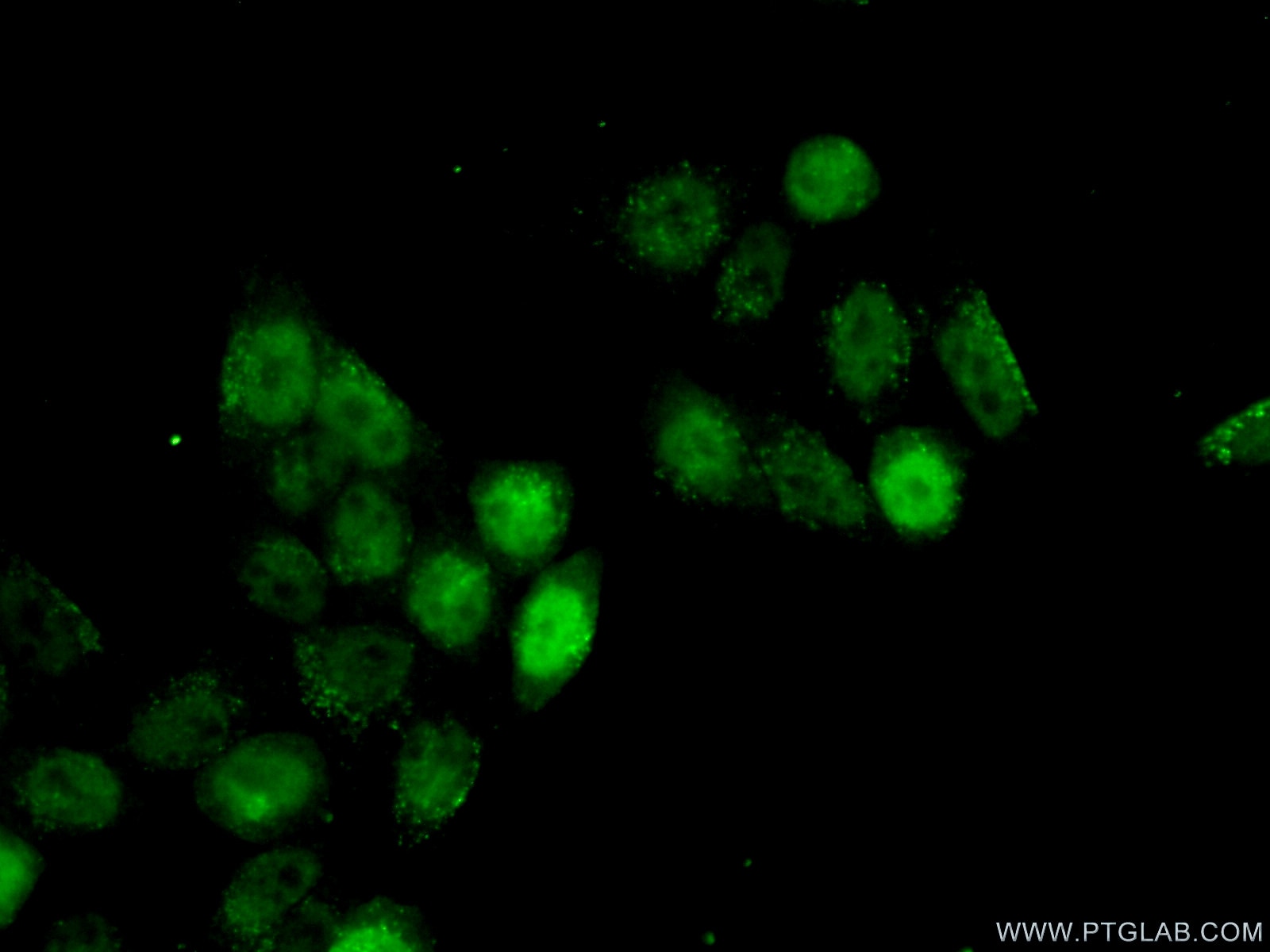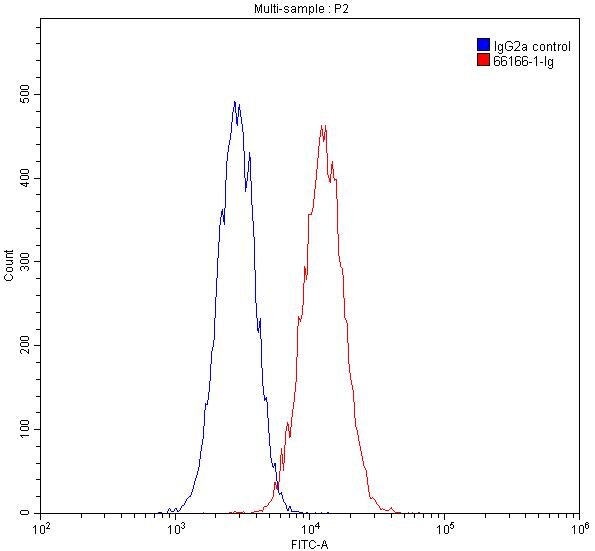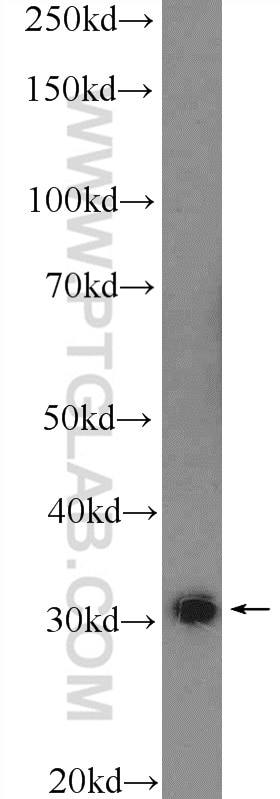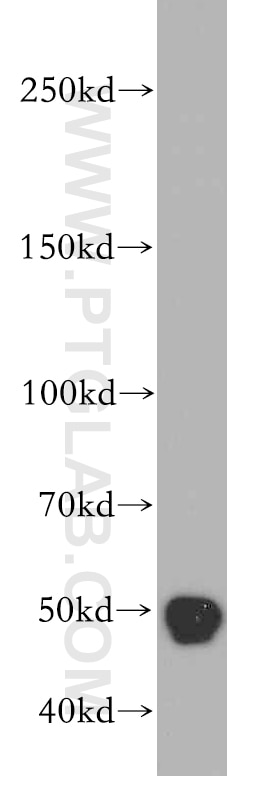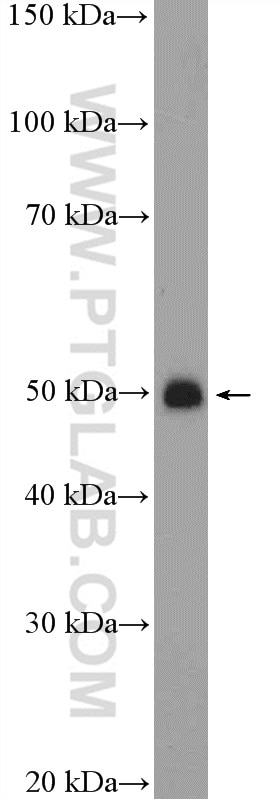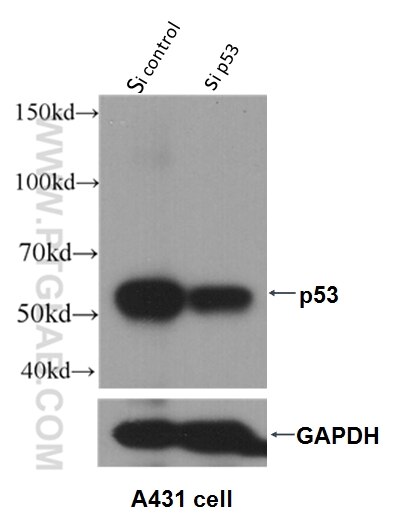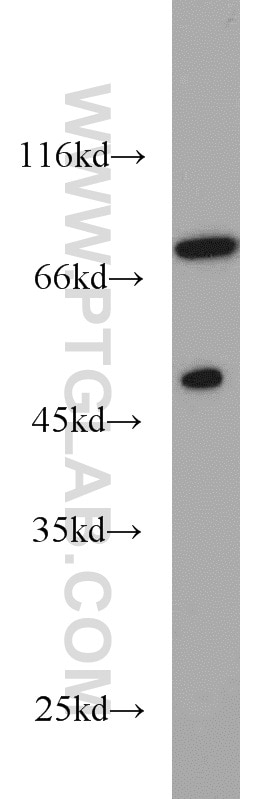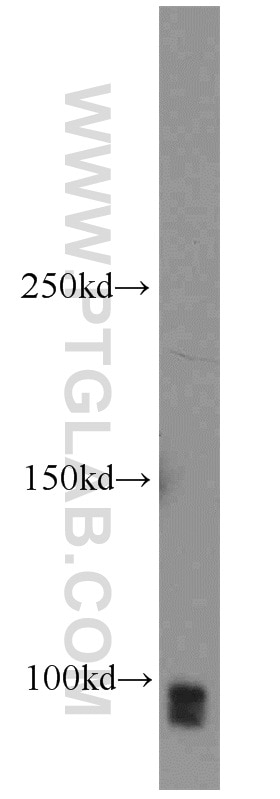Anticorps Monoclonal anti-TBP
TBP Monoclonal Antibody for FC, IF, IHC, IP, WB, ELISA
Hôte / Isotype
Mouse / IgG2a
Réactivité testée
Humain, porc, rat, souris
Applications
WB, IP, IHC, IF, FC, ELISA
Conjugaison
Non conjugué
CloneNo.
2H3B2
N° de cat : 66166-1-Ig
Synonymes
"TBP Antibodies" Comparison
View side-by-side comparison of TBP antibodies from other vendors to find the one that best suits your research needs.
Applications testées
| Résultats positifs en WB | cellules LNCaP, cellules HEK-293, cellules HeLa, cellules HepG2, cellules HSC-T6, cellules Jurkat, cellules K-562, cellules Neuro-2a, cellules NIH/3T3, tissu hépatique de porc |
| Résultats positifs en IP | cellules HEK-293 |
| Résultats positifs en IHC | tissu de cancer du foie humain, tissu de cancer du sein humain il est suggéré de démasquer l'antigène avec un tampon de TE buffer pH 9.0; (*) À défaut, 'le démasquage de l'antigène peut être 'effectué avec un tampon citrate pH 6,0. |
| Résultats positifs en IF | cellules A431, cellules HeLa |
| Résultats positifs en cytométrie | cellules HepG2, |
Dilution recommandée
| Application | Dilution |
|---|---|
| Western Blot (WB) | WB : 1:20000-1:100000 |
| Immunoprécipitation (IP) | IP : 0.5-4.0 ug for 1.0-3.0 mg of total protein lysate |
| Immunohistochimie (IHC) | IHC : 1:325-1:1300 |
| Immunofluorescence (IF) | IF : 1:200-1:800 |
| Flow Cytometry (FC) | FC : 1:10-1:100 |
| It is recommended that this reagent should be titrated in each testing system to obtain optimal results. | |
| Sample-dependent, check data in validation data gallery | |
Applications publiées
| WB | See 21 publications below |
| IF | See 1 publications below |
Informations sur le produit
66166-1-Ig cible TBP dans les applications de WB, IP, IHC, IF, FC, ELISA et montre une réactivité avec des échantillons Humain, porc, rat, souris
| Réactivité | Humain, porc, rat, souris |
| Réactivité citée | rat, Humain, porc, souris |
| Hôte / Isotype | Mouse / IgG2a |
| Clonalité | Monoclonal |
| Type | Anticorps |
| Immunogène | TBP Protéine recombinante Ag12383 |
| Nom complet | TATA box binding protein |
| Masse moléculaire calculée | 338 aa, 38 kDa |
| Poids moléculaire observé | mouse/rat 33-36 kDa and human 37-43kDa |
| Numéro d’acquisition GenBank | BC110341 |
| Symbole du gène | TBP |
| Identification du gène (NCBI) | 6908 |
| Conjugaison | Non conjugué |
| Forme | Liquide |
| Méthode de purification | Purification par protéine A |
| Tampon de stockage | PBS avec azoture de sodium à 0,02 % et glycérol à 50 % pH 7,3 |
| Conditions de stockage | Stocker à -20°C. Stable pendant un an après l'expédition. L'aliquotage n'est pas nécessaire pour le stockage à -20oC Les 20ul contiennent 0,1% de BSA. |
Informations générales
The TATA binding protein (TBP) is a transcription factor that binds specifically to a DNA sequence TATA box. This DNA sequence is found about 25-30 base pairs upstream of the transcription start site in some eukaryotic gene promoters. TBP, along with a variety of TBP-associated factors, make up the TFIID, a general transcription factor that in turn makes up part of the RNA polymerase II preinitiation complex. As one of the few proteins in the preinitation complex that binds DNA in a sequence-specific manner, it helps position RNA polymerase II over the transcription start site of the gene. However, it is estimated that only 10-20% of human promoters have TATA boxes. Therefore, TBP is probably not the only protein involved in positioning RNA polymerase II. This antibody detects human TBP (~40 kDa) and mouse/rat Tbp (~35 kDa).
Protocole
| Product Specific Protocols | |
|---|---|
| WB protocol for TBP antibody 66166-1-Ig | Download protocol |
| IHC protocol for TBP antibody 66166-1-Ig | Download protocol |
| IF protocol for TBP antibody 66166-1-Ig | Download protocol |
| IP protocol for TBP antibody 66166-1-Ig | Download protocol |
| FC protocol for TBP antibody 66166-1-Ig | Download protocol |
| Standard Protocols | |
|---|---|
| Click here to view our Standard Protocols |
Publications
| Species | Application | Title |
|---|---|---|
Genome Res Ligand-induced native G-quadruplex stabilization impairs transcription initiation. | ||
PLoS Biol Loss of adenomatous polyposis coli function renders intestinal epithelial cells resistant to the cytokine IL-22. | ||
Virulence Inhibition of cell proliferation by Tas of foamy viruses through cell cycle arrest or apoptosis underlines the different mechanisms of virus-host interactions. | ||
Biochem Pharmacol PPARα regulates the expression of human arylacetamide deacetylase involved in drug hydrolysis and lipid metabolism. | ||
Front Oncol TFEB Promotes Prostate Cancer Progression via Regulating ABCA2-Dependent Lysosomal Biogenesis. | ||
Mol Cancer Res Identification of Endogenous Adenomatous Polyposis Coli Interaction Partners and β-Catenin-Independent Targets by Proteomics. |
